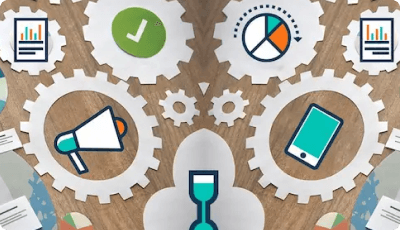Introduction
Ever met someone for the first time and felt like you’ve known them forever? That’s the magic of connection, much like when you create a buyer persona for your business. These semi-fictional representations of your ideal customer, crafted using market research and real data about your existing customers, are crucial in understanding and targeting your audience effectively.
Why Is Buyer Persona Important?
If marketing were fishing, then buyer personas are your perfect bait. Knowing who you’re targeting with your B2B buyer persona can determine whether your digital marketing campaign sinks or swims. They help you structure your content and allocate resources effectively, ensuring your efforts resonate with the intended audience.
Can Businesses Thrive Without A Buyer Persona?
While some businesses might get lucky without a clear buyer persona, it’s akin to sailing a ship without a compass. You might catch the wind occasionally, but it’s uncertain if you’ll reach your desired destination.
Defining Buyer Persona
Imagine an avatar representing a segment of your target audience – detailing their demographics, buying habits, interests, challenges, and motivations. That’s your buyer persona. It’s more than just data; it’s a relatable entity that resonates with your brand’s vision. Incorporating buyer persona research into this process enhances the accuracy and relevance of your avatar, aligning it more closely with your target audience’s real characteristics and needs.
Importance In Marketing
For marketing professionals, understanding how to create buyer personas, including developing a detailed customer persona, acts as a guiding light. When you know who you’re speaking to, crafting tailored messages becomes second nature, leading to improved content relevance, higher engagement, and increased conversion rates.
Role In Sales And Service Delivery
Sales teams, equipped with insights from buyer personas, can pitch digital marketing solutions more effectively. It reduces the sales cycle and increases customer satisfaction since the services resonate with the client’s needs and expectations.

Buyer Persona Facts Every Marketer Should Know
Boosts Coordination Of Sales And Marketing
With a shared understanding of target audiences through different buyer personas, sales, and marketing teams can operate harmoniously, ensuring seamless customer experiences. This synergy is further enhanced by buyer persona research, which provides deep insights into customer preferences and behaviors.
Real-World Example: Bridal Wear Scenario
In a boutique specializing in bridal wear, marketing campaigns emphasizing timeless elegance, perfectly aligned with the store’s buyer persona, can be complemented by a sales team trained to highlight the enduring quality of the gowns. This strategic approach, informed by buyer persona research, ensures that every aspect of the customer experience is cohesive and tailored to meet the expectations of their specific target audience.
Tips For Coordination
- Joint workshops between sales and marketing teams
- Regular feedback loops to refine buyer personas
Help You Understand Your Product
Sometimes, businesses are so close to their products that they miss seeing them from a consumer’s perspective. Buyer personas act as mirrors reflecting the genuine needs and wants of the market, closely intertwined with the concept of a customer persona.
Understanding User Persona vs. Buyer Persona
While both are essential, a user persona represents users of your product, whereas a buyer persona represents those who make or influence purchasing decisions. The user persona focuses on the usage and interaction with the product, while the buyer or customer persona delves into the motivations and decision-making processes of the purchasers.
Tips To Strengthen Product Understanding
- Constantly seek feedback
- Conduct user testing sessions with your target buyer personas
Build Your Business With Data-Driven Research
It’s not about assumptions; it’s about data. The more research-backed your buyer persona, the more reliable and effective your business strategies become. Understanding how to create buyer personas is crucial in this process, as it involves gathering and analyzing data to form a comprehensive view of your target market.
The Difference between User And Buyer Personas
User personas focus on the usability of a product, while buyer personas concentrate on purchasing motivations and patterns.
Importance of Data in Product Development
Data-driven insights ensure your product or service aligns with market demand, reducing risks associated with product launches.
Segment And Personalize Your Leads
Not every lead is the same. By segmenting them according to your buyer personas, you can deliver personalized experiences, increasing the likelihood of conversions.
Scenario: Banking Systems And Buyer Persona
For a bank, a college student might be targeted with low-fee account options, while a business owner might be approached with premium business account services.
Prepare Customers’ Mindset To Buy Your Product
An effective buyer persona strategy primes potential customers, gradually nudging them from awareness to consideration and finally to making a purchase decision.
Strategies For Visual Marketing
- Use imagery that resonates with your buyer persona
- Craft visual stories that solve your persona’s challenges
Tips For Effective Content Marketing
- Address pain points
- Showcase benefits over features
Steps To Create Your Own Buyer Persona
1. Identifying Top Customers
The first step in creating buyer personas is pinpointing who your top customers are. This process is integral to creating customer personas. While reaching a broad audience is important, repeat, loyal customers often contribute the most to your business’s growth.
How to identify top customers:
- Analytical Tools: Use tools like Google Analytics or CRM systems to determine which demographic engages the most with your content or frequently buys your product.
- Feedback and Reviews: Customer feedback can provide insights into who finds the most value in your offer.
By focusing on these top customers, you can develop a ‘model’ persona – one that epitomizes the characteristics and habits of your most valued clientele.
2. Recognizing Customer Challenges
Once you have a clear picture of your top customers, the next step involves identifying their challenges. This can help you understand their pain points and how your product or service can alleviate them.
Methods to recognize challenges:
- Surveys: Send out periodic surveys to your customers, asking about their challenges or areas they wish to see improvements. This method is particularly effective in differentiating the various types of buyer personas based on their unique challenges.
- Direct Communication: Engage with customers on social media or hold Q&A sessions. Sometimes, the most candid feedback emerges from casual conversations.
- Competitor Analysis: Study the reviews on competitor products. Often, customers highlight issues they face, which can be addressed in your product or service.
Recognizing these challenges not only aids in enhancing your offering but also provides a narrative for your buyer personas, making them more relatable and authentic.
3. Importance Of Research In Persona Creation
Research is the backbone of constructing effective buyer personas. Relying on assumptions can lead to a skewed understanding of your audience. Instead, grounded, comprehensive research provides a solid foundation.
Effective research methods:
- Interviews: Conducting interviews with both prospective and current customers as part of your buyer persona research can offer a wealth of information.
- Focus Groups: Assembling small groups to discuss their preferences and challenges can give you a broader perspective.
- Market Research: Stay updated with market trends. Sometimes, changes in the market dynamics can influence buyer personas.
Investing time in research ensures that your buyer personas are not just figments of imagination but are based on real-world data and genuine customer insights.

4. Immersing In The Persona Experience
Once you’ve gathered enough information and sketched out your B2B buyer persona, it’s essential to immerse yourself in their experience. This involves understanding their journey, identifying with their feelings, and looking at the world from their perspective.
Ways to immerse:
- Persona Journey Mapping: Trace the steps your persona might take, from realizing a need to making a purchase.
- Empathy Mapping: Dive deep into your persona’s emotions, feelings, and thoughts at different journey stages.
This immersion ensures that when you strategize your marketing or product development, you’re genuinely resonating with the needs and desires of your target audience.
Optimization And The Pareto Principle
Remember, 80% of sales often come from 20% of customers. Focus on what matters.
Applying the 80/20 Rule in Persona creation and marketing strategy targeting the right audience segments can result in higher returns on investment. By understanding your key buyer personas, you allocate resources more efficiently, ensuring maximum impact.
Conclusion
Mastering B2B buyer personas is not just a marketing fad. The compass directs your strategies, ensuring you connect with your audience meaningfully. With these insights, you’re well on your way to crafting campaigns that resonate and engage. We invite you to share your success stories or challenges in creating buyer personas. Engage with us, and let’s learn and grow together in mastering this powerful business tool.







